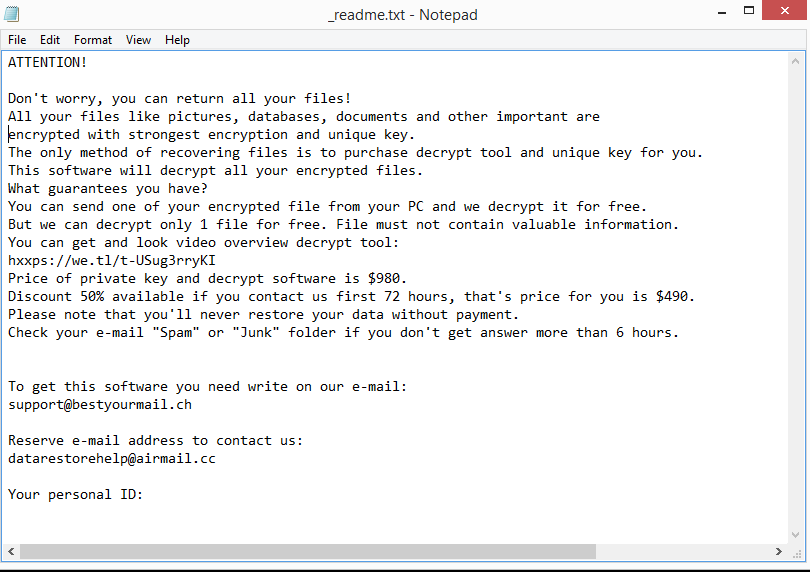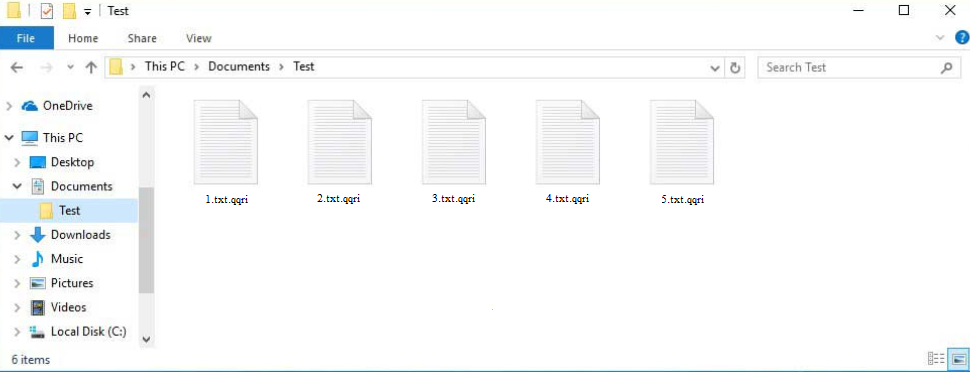Qqri ransomware is a dangerous malware infection that encrypts files. It belongs to the notorious Djvu/STOP ransomware family. The cybercriminals operating this malware family release new ransomware versions on a regular basis, so Qqri ransomware is essentially just another version of Djvu. It adds .qqri to encrypted files.
As soon as it’s initiated, Qqri ransomware will start encrypting your personal files. Your photos, videos, images, documents, etc., will all be encrypted. You can easily recognize which files have been encrypted by the extensions added to them. This Djvu version adds .qqri. As an example, image.jpg would become image.jpg.qqri. Unfortunately, you won’t be able to open the files with this extension unless you first use a specific decryptor on them. But acquiring the decryptor will not be easy because the only people who have it are the cybercriminals operating this ransomware. And considering that their main intention is to extort money from users, the malicious actors will not just give it to you.
The ransomware will drop a _readme.txt file in all folders that have encrypted files. These notes are more or less identical to one another when it comes to Djvu ransomware versions, with only the contact email addresses changing from time to time. The note explains that in order to get the decryptor, you’d need to pay $980 in ransom. The note also mentions a 50% discount for victims who make contact within the first 72 hours, but whether that is actually the case is questionable. When it comes to ransomware and paying the ransom, it’s important to keep in mind that the people behind these infections are cybercriminals. Ransomware does not operate like a regular business so there’s always the chance that you won’t be sent a decryptor even if you pay. It’s worth noting that many users in the past have paid ransoms but have not received anything in return. So while it’s your decision to make, you need to be aware of the risks that come with paying the ransom.
If you have a backup of your files, you should have no issues with file recovery. However, it’s essential that you first remove Qqri ransomware from your computer. Make sure to use anti-malware software for this because it’s a complicated infection that requires a professional tool to get rid of.
File recovery becomes much trickier if you don’t have a backup. If you don’t intend to pay, your only option is to wait for a free Qqri ransomware decryptor to be released. But while malware researchers often help victims recover their files by releasing free decryptors, it’s very difficult to do that with ransomware from the Djvu/STOP family. Qqri ransomware, and most other Djvu more recent versions, use online keys to encrypt files. This means that the keys are unique to each victim, and without those keys, it’s very difficult to recover files. So unless those keys are released by the cybercriminals themselves (or if law enforcement ever apprehends them), a free Qqri ransomware decryptor is not particularly likely. There is a free Djvu/STOP decryptor by Emsisoft that you can try, though it’s not very likely to work unless Qqri ransomware used offline keys to encrypt your files.
Ransomware distribution methods
It’s very common for users to infect their computers with malware by opening random email attachments. Malicious emails frequently target users whose email addresses have been leaked. But fortunately, emails carrying malware are generally quite easy to recognize. For one, malicious emails are full of grammar/spelling mistakes. Senders usually pretend to be from legitimate companies so the mistakes are very glaring, even for non-native English speakers. Malicious emails also address users with generic words like “User”, “Customer”, “Member”, etc., instead of using their names. You likely have noticed this but when companies send emails to their users, they address them by name.
The exception for obvious malicious emails is when you are a specific target. If hackers can get access to some of your personal information, their attempts to infect your computer with malware would be more sophisticated. For example, your name would be used to address you, and the email may contain no mistakes and some details that would make you trust it. This is why it’s recommended to always use anti-malware software or VirusTotal to scan email attachments (especially unsolicited) before opening them.
You should also check the email address of the sender if you get an unsolicited email. If the email address looks to be completely random but the sender claims to be from a known/legitimate company, there is a very good chance that you are dealing with a malicious or spam email. Even if an email address looks to be legitimate, you should still research it to see if the sender is who they claim to be.
Torrents are also used for malware distribution. Malicious actors can upload torrents with malware in them on various torrent websites because oftentimes, those sites are quite poorly moderated. Malware is especially common in torrents for copyrighted content (movies, TV shows, video games, software, etc.). So if your computer is infected with Qqri ransomware and you pirate, torrents are probably how you got the infection. Users who cannot recognize torrents with malware in them run the risk of unintentionally introducing malicious software to their computers. In general, downloading copyrighted content via torrent is not recommended because it not only endangers your computer, but it’s also essentially content theft.
How to remove Qqri ransomware
Because ransomware is a very complex malware infection, you need to use anti-malware software to remove Qqri ransomware. If you try to delete Qqri ransomware manually, you risk causing additional damage to your device. So it’s not only safest to use anti-malware software but also the easiest. Once anti-malware has fully deleted Qqri ransomware, you can connect to your backup to start recovering files.
If you don’t have a backup, your only option is currently waiting for a free Qqri ransomware decryptor to be released. Whether that happens is not certain but if it does get released, it would appear on NoMoreRansom. Back up your encrypted files and occasionally check NoMoreRansom for a decryptor.
Offers
Download Removal Toolto scan for Qqri ransomwareUse our recommended removal tool to scan for Qqri ransomware. Trial version of provides detection of computer threats like Qqri ransomware and assists in its removal for FREE. You can delete detected registry entries, files and processes yourself or purchase a full version.
More information about SpyWarrior and Uninstall Instructions. Please review SpyWarrior EULA and Privacy Policy. SpyWarrior scanner is free. If it detects a malware, purchase its full version to remove it.

WiperSoft Review Details WiperSoft (www.wipersoft.com) is a security tool that provides real-time security from potential threats. Nowadays, many users tend to download free software from the Intern ...
Download|more


Is MacKeeper a virus? MacKeeper is not a virus, nor is it a scam. While there are various opinions about the program on the Internet, a lot of the people who so notoriously hate the program have neve ...
Download|more


While the creators of MalwareBytes anti-malware have not been in this business for long time, they make up for it with their enthusiastic approach. Statistic from such websites like CNET shows that th ...
Download|more
Quick Menu
Step 1. Delete Qqri ransomware using Safe Mode with Networking.
Remove Qqri ransomware from Windows 7/Windows Vista/Windows XP
- Click on Start and select Shutdown.
- Choose Restart and click OK.

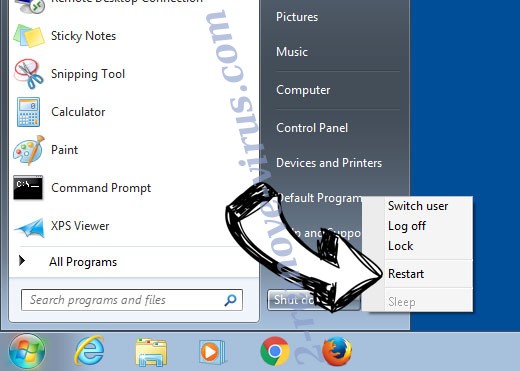
- Start tapping F8 when your PC starts loading.
- Under Advanced Boot Options, choose Safe Mode with Networking.

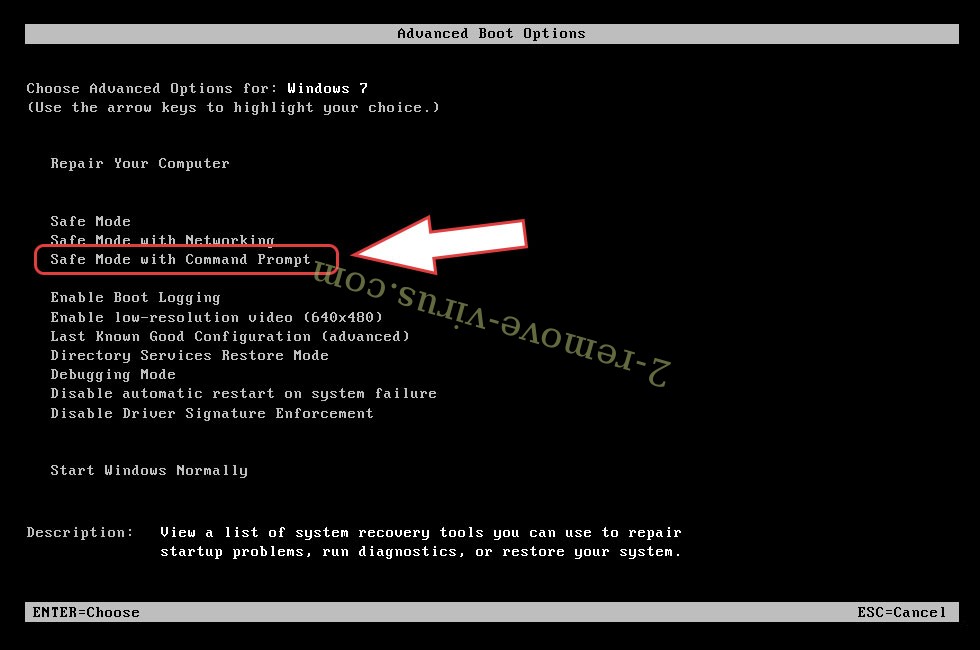
- Open your browser and download the anti-malware utility.
- Use the utility to remove Qqri ransomware
Remove Qqri ransomware from Windows 8/Windows 10
- On the Windows login screen, press the Power button.
- Tap and hold Shift and select Restart.

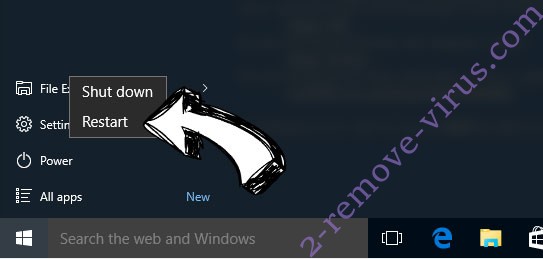
- Go to Troubleshoot → Advanced options → Start Settings.
- Choose Enable Safe Mode or Safe Mode with Networking under Startup Settings.

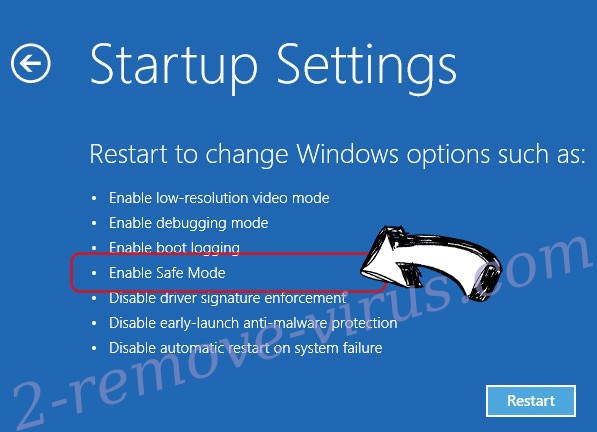
- Click Restart.
- Open your web browser and download the malware remover.
- Use the software to delete Qqri ransomware
Step 2. Restore Your Files using System Restore
Delete Qqri ransomware from Windows 7/Windows Vista/Windows XP
- Click Start and choose Shutdown.
- Select Restart and OK


- When your PC starts loading, press F8 repeatedly to open Advanced Boot Options
- Choose Command Prompt from the list.

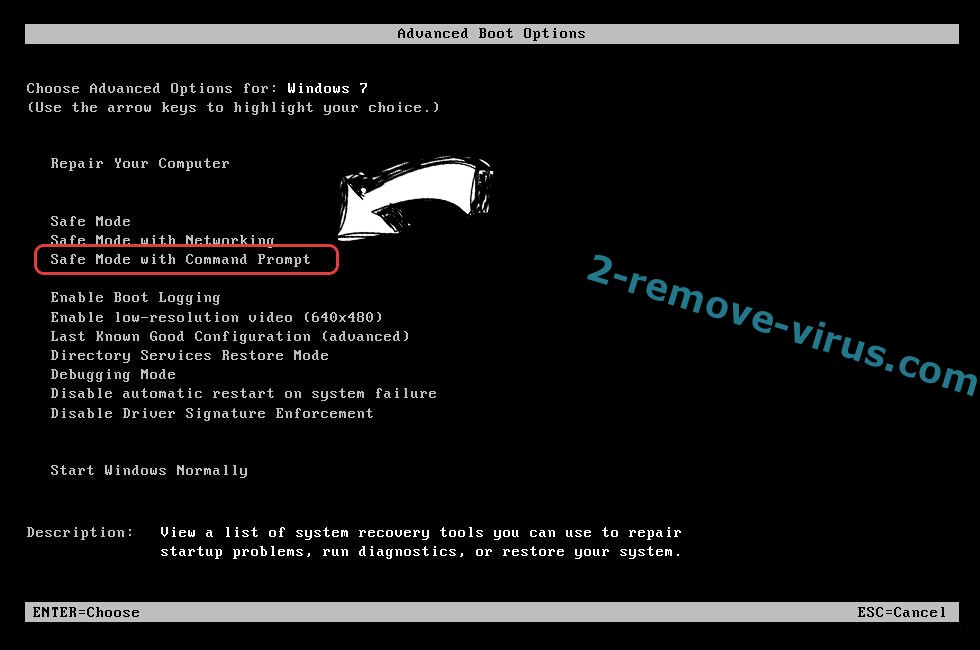
- Type in cd restore and tap Enter.

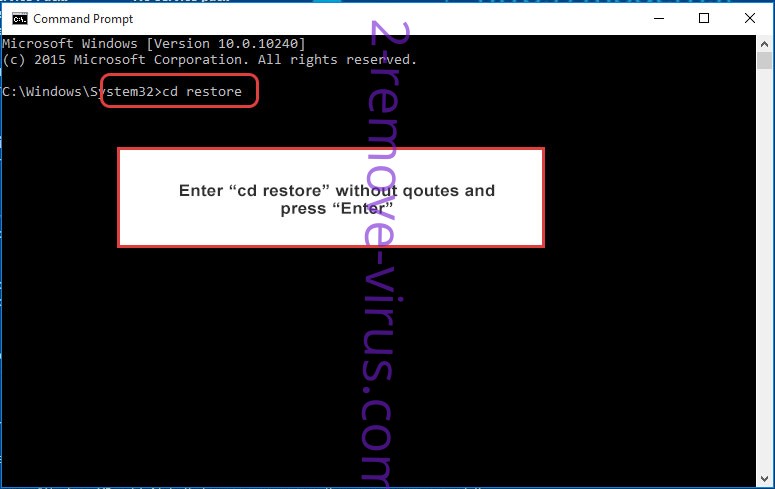
- Type in rstrui.exe and press Enter.

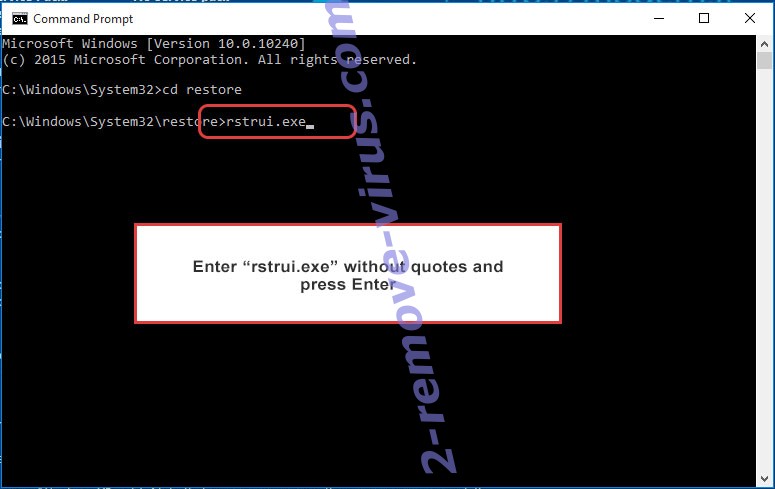
- Click Next in the new window and select the restore point prior to the infection.

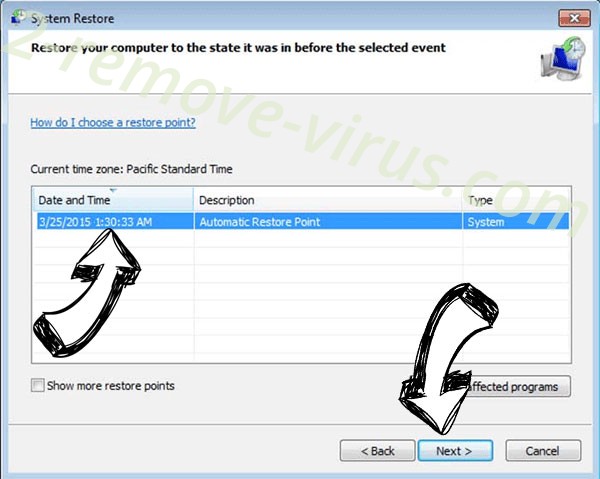
- Click Next again and click Yes to begin the system restore.

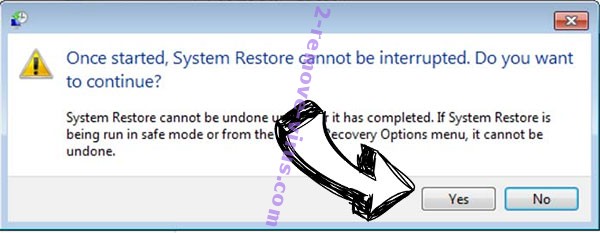
Delete Qqri ransomware from Windows 8/Windows 10
- Click the Power button on the Windows login screen.
- Press and hold Shift and click Restart.


- Choose Troubleshoot and go to Advanced options.
- Select Command Prompt and click Restart.

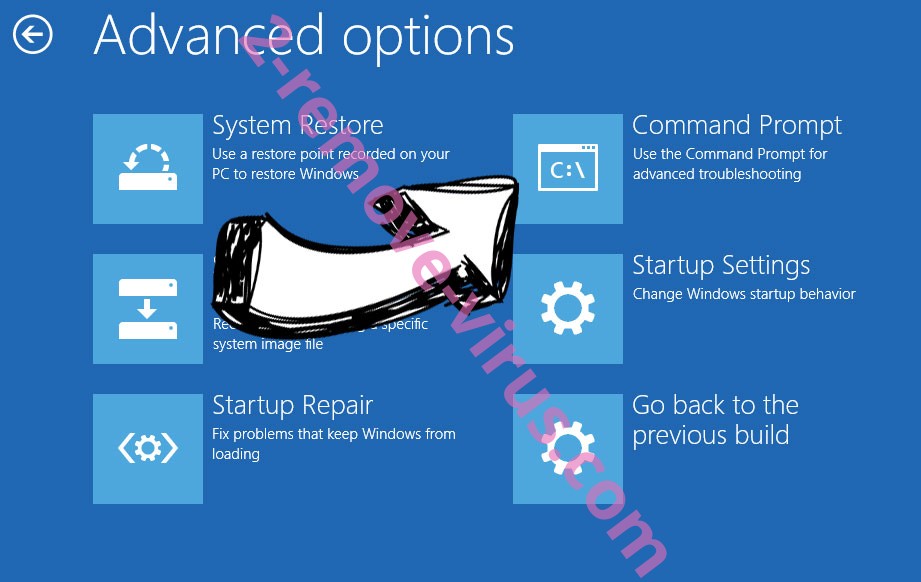
- In Command Prompt, input cd restore and tap Enter.


- Type in rstrui.exe and tap Enter again.


- Click Next in the new System Restore window.

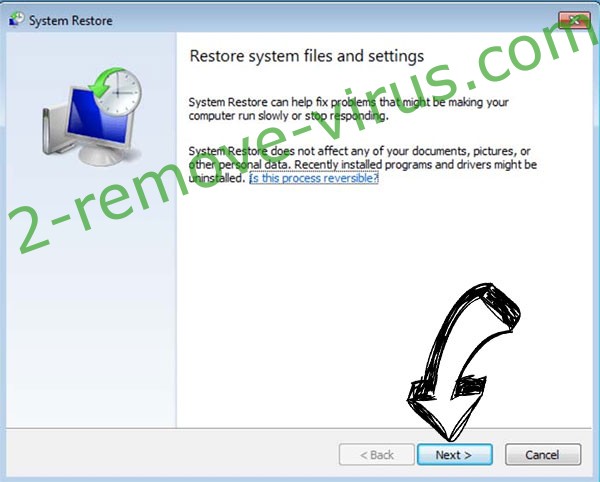
- Choose the restore point prior to the infection.


- Click Next and then click Yes to restore your system.


Site Disclaimer
2-remove-virus.com is not sponsored, owned, affiliated, or linked to malware developers or distributors that are referenced in this article. The article does not promote or endorse any type of malware. We aim at providing useful information that will help computer users to detect and eliminate the unwanted malicious programs from their computers. This can be done manually by following the instructions presented in the article or automatically by implementing the suggested anti-malware tools.
The article is only meant to be used for educational purposes. If you follow the instructions given in the article, you agree to be contracted by the disclaimer. We do not guarantee that the artcile will present you with a solution that removes the malign threats completely. Malware changes constantly, which is why, in some cases, it may be difficult to clean the computer fully by using only the manual removal instructions.
